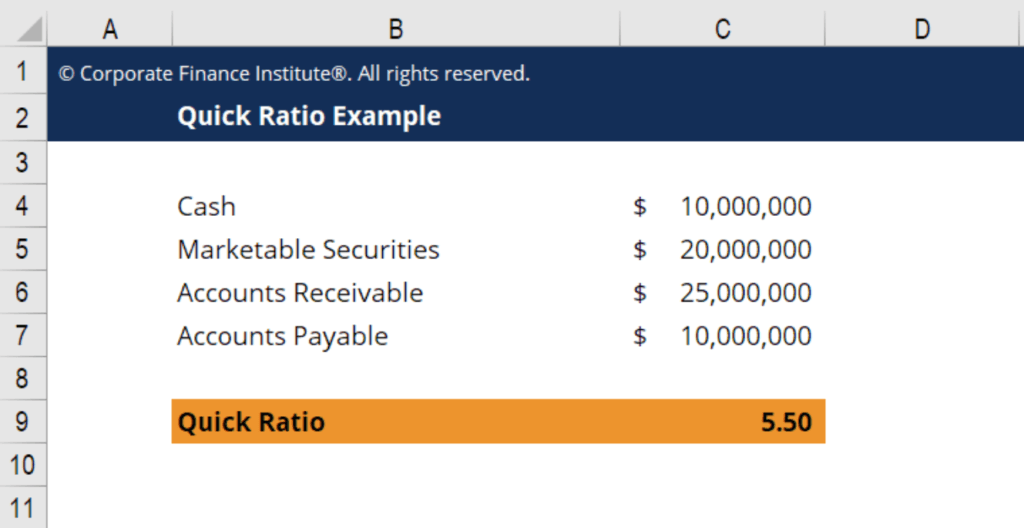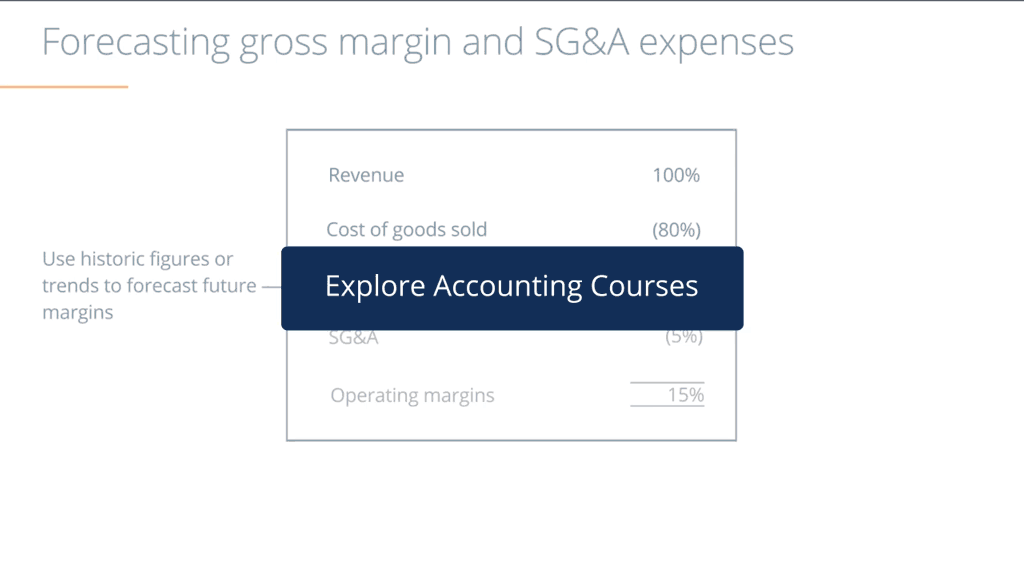Quick Ratio
Do the company’s current assets easily cover its current liabilities?
What is the Quick Ratio?
The Quick Ratio, also known as the Acid-test or Liquidity ratio, measures the ability of a business to pay its short-term liabilities by having assets that are readily convertible into cash. These assets are, namely, cash, marketable securities, and accounts receivable. These assets are known as “quick” assets since they can quickly be converted into cash.

The Quick Ratio Formula
Quick Ratio = [Cash & equivalents + marketable securities + accounts receivable] / Current liabilities
Or, alternatively,
Quick Ratio = [Current Assets – Inventory – Prepaid expenses] / Current Liabilities
Example
For example, let’s assume a company has:
- Cash: $10 Million
- Marketable Securities: $20 Million
- Accounts Receivable: $25 Million
- Accounts Payable: $10 Million
This company has a liquidity ratio of 5.5, which means that it can pay its current liabilities 5.5 times over using its most liquid assets. A ratio above 1 indicates that a business has enough cash or cash equivalents to cover its short-term financial obligations and sustain its operations.

The formula in cell C9 is as follows = (C4+C5+C6) / C7
This formula takes cash, plus securities, plus AR, and then divides that total by AP (the only liability in this example).
The result is 5.5.
Download the Free Template
Enter your name and email in the form below and download the free template now!
Quick Ratio Template
Download the free Excel template now to advance your finance knowledge!
What’s Included and Excluded?
Generally speaking, the ratio includes all current assets, except:
- Prepaid expenses – because they can not be used to pay other liabilities
- Inventory – because it may take too long to convert inventory to cash to cover pressing liabilities
As you can see, the ratio is clearly designed to assess companies where short-term liquidity is an important factor. Hence, it is commonly referred to as the Acid Test.
The Quick Ratio In Practice
The quick ratio is the barometer of a company’s capability and inability to pay its current obligations. Investors, suppliers, and lenders are more interested to know if a business has more than enough cash to pay its short-term liabilities rather than when it does not. Having a well-defined liquidity ratio is a signal of competence and sound business performance that can lead to sustainable growth.
To learn more about this ratio and other important metrics, check out CFI’s course on performing financial analysis.
Quick Ratio vs Current Ratio
The quick ratio is different from the current ratio, as inventory and prepaid expense accounts are not considered in quick ratio because, generally speaking, inventories take longer to convert into cash and prepaid expense funds cannot be used to pay current liabilities. For some companies, however, inventories are considered quick assets; it depends entirely on the nature of the business, but such cases are extremely rare.
Additional Resources
Thank you for reading CFI’s guide to Quick Ratio. To keep learning and advancing your career as a financial analyst, these additional CFI resources will help you on your way:
Analyst Certification FMVA® Program
Below is a break down of subject weightings in the FMVA® financial analyst program. As you can see there is a heavy focus on financial modeling, finance, Excel, business valuation, budgeting/forecasting, PowerPoint presentations, accounting and business strategy.
A well rounded financial analyst possesses all of the above skills!
Additional Questions & Answers
CFI is the global institution behind the financial modeling and valuation analyst FMVA® Designation. CFI is on a mission to enable anyone to be a great financial analyst and have a great career path. In order to help you advance your career, CFI has compiled many resources to assist you along the path.
In order to become a great financial analyst, here are some more questions and answers for you to discover:
- What is Financial Modeling?
- How Do You Build a DCF Model?
- What is Sensitivity Analysis?
- How Do You Value a Business?
Accounting Crash Courses
Learn accounting fundamentals and how to read financial statements with CFI’s online accounting classes.
These courses will give you the confidence to perform world-class financial analyst work. Start now!
Boost your confidence and master accounting skills effortlessly with CFI’s expert-led courses! Choose CFI for unparalleled industry expertise and hands-on learning that prepares you for real-world success.


